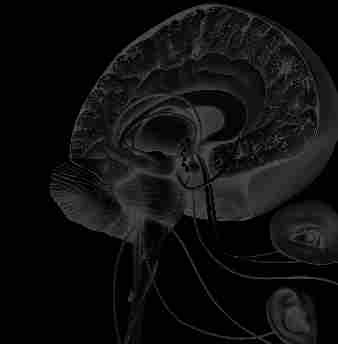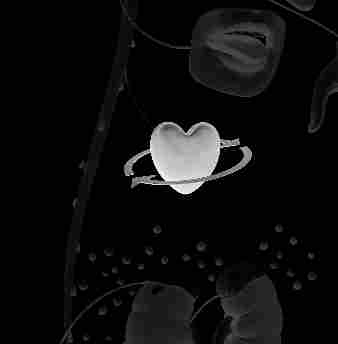Switch on Your Brain: The Key to Peak Happiness, Thinking, and Health (25 page)
Read Switch on Your Brain: The Key to Peak Happiness, Thinking, and Health Online
Authors: Dr. Caroline Leaf
Tags: #Health; Fitness & Dieting, #Christian Living, #Mental Health, #Christian Books & Bibles
Focused Reflection
in your brain. Let’s look at some of the technical side in-
terspersed with some focused questions to help you digest
the science.
Just a quick reminder here: Each of these 5 steps that you
do daily for 21 days are simple, yet there are profound par-
allel and simultaneous neurophysiological things going on
in your brain that are so marvelous you cannot help but be
one who “admires God’s work,” as Thomas More put it. So
don’t let yourself get overwhelmed by the science; instead,
look at it with fascination and admiration of our gracious
God. Science is pure evidence of grace.
The Rush to the Front of the Brain
After the gathering stage, the electromagnetic signals—your
thinking and those existing memories that have been brought
into consciousness—speed through the hippocampus, mov-
ing toward the front of the brain—the basal forebrain and
orbitofrontal cortex, which are behind the inside corners of
corpus callosum
ACG
PFC
insula & claustrum
basal forebrain
173
_Leaf_SwitchOnBrain_LS_mw.indd 173
5/16/13 1:34 PM
THE 21-DAY BRAIN DETOX PLAN
your eyes and above your eyebrows respectively. The infor-
mation flows through in the hippocampus for twenty-four
to forty-eight hours, constantly being amplified each time it
cycles to the front.
Free Will
The amplification sets in motion a delightful string of
events so magnificent that it can only reflect the work of your
Creator. This string of events is your free will and decision-
making ability, a true gift. (Before you go on, please look
back at the summaries of keys 1, 2, 3, and 7.)
The Thought Becomes Vulnerable to Change
This amplification means the thought is conscious and
becomes “labile,” which means it is unstable and changeable.
In fact, it must change (see chap. 3). The science of thought
demands that change must occur either by reinforcing the
thought as it is or by changing some or all of it.
The memory cannot sink back as part of your attitude
into your nonconscious mind without being changed in some
way. This is marvelous news for you, but it also emphasizes
the responsibility you need to take for your thought life. No
thought is harmless, nor does it stay the same—it constantly
changes. As I said in part 1, you are constantly changing
the landscape of your brain moment by moment. You are a
thinking, creative being—quite brilliant.
QUESTION: Now that you are aware that thoughts
are unstable and changeable when they are in your
conscious cognitive mind, can you focus on one
in particular and experimenting with changing it?
174
_Leaf_SwitchOnBrain_LS_mw.indd 174
5/16/13 1:34 PM
Focused Reflection
When You Think, You Change
This constant change means that the deeper you think, the
more change you can make. This change is real and hap-
pens via electromagnetic and quantum forces as well as
neurotransmitters activating genetic expression and protein
synthesis (see chaps. 2 and 3).
As a reminder, proteins are made and used to grow new
branches to hold your thoughts. So if you don’t get rid of
the thought, you reinforce it. This is phenomenal because
science confirms that you can choose with your free will to
interfere with genetic expression, which is protein synthesis
(chap. 2). If you say you can’t or won’t, this decision will
actually cause protein synthesis and change in your brain
into “I can’t” or “I won’t.” Remember: mind controls mat-
ter (chap. 1). Now “bringing into captivity every thought”
(2 Cor. 10:5 KJV) becomes a lot more important. Thoughts
are constantly remodeled by the “renewing of your mind”
(Rom. 12:2 NIV).
QUESTION: You have to make a decision. Do you
want to build memories out of this new informa-
tion coming into your mind?
When you do this, as you saw in chapters 2 and 3, you actu-
ally change the physical structure—neuroplasticity—of your
brain. This is because thinking causes important neurotrans-
mitters—chemicals in the brain that carry electrical impulses—
to flow. These neurotransmitters plus electromagnetic and
quantum activity cause changes deep inside the cell, affecting
genetic expression and protein synthesis, as I have described
earlier.
175
_Leaf_SwitchOnBrain_LS_mw.indd 175
5/16/13 1:34 PM
THE 21-DAY BRAIN DETOX PLAN
Imagining Builds Physical Thoughts
Research has shown that mental practice—imagination, visu-
alization, deep thought, and reflection—produces the same
physical changes in the brain as would physically carrying out
the same imagined processes. We see this principle in the Bible:
“Nothing they have imagined they can do will be impossible for
them” (Gen. 11:6 AMP). Brain scans show that the parts of the
brain activated by action are the same parts of the brain acti-
vated by simply thinking about an action. This sheds new depths
of understanding for the Scripture, “Faith is the substance of
things hoped for, the evidence of things not seen” (Heb. 11:1).
Rehearsing things mentally is a great everyday example of
how you can think and more deeply reflect on daily actions,
because each time you do this, you change the memory. For
example, if a surgeon is about to perform an operation, he first
mentally rehearses each precise step, as would an athlete before
a game or a student about to take an exam. As you mentally
rehearse it, the newly built memory becomes increasingly stron-
ger and begins to grow more connections to neighboring nerve
cells, integrating that thought into other thought patterns. This
leads to automatization, which I spoke about in chapter 8.
QUESTION: Have you ever found yourself re-
hearsing something over and over for days on end,
almost like you couldn’t get it out of your head?
How did that make you feel?
A healthy thought and a toxic thought can both be built
with mental rehearsal. But you can tear toxic strongholds
down by choosing to bring the thought into conscious aware-
ness for analysis and then changing it through repentance and
forgiveness—which causes protein synthesis—and replacing
176
_Leaf_SwitchOnBrain_LS_mw.indd 176
5/16/13 1:34 PM
Focused Reflection
it with the correct information, using Philippians 4:8 or a
similar Scripture guideline.
QUESTION: How do you tear down the toxic
stronghold?
The Contribution of the Heart
When talking about thinking, free will, and understanding,
you need to also consider the exciting contribution the heart
makes to thinking and decision-making. Your heart is not just
a pump; it helps with decision-making and choices, acting
like a checking station for all the emotions generated by the
flow of chemicals from thoughts. In fact, every single cell is
connected to your heart and, because your heart responds
to and is controlled by your brain, every single cell in your
body is affected by your thoughts.
Your heart is in constant communication with your brain
and the rest of your body, checking the accuracy and integrity
of your thought life. As you are about to make a decision,
your heart pops in a quiet word of advice. It is well worth
listening to this advice, because when you listen to your heart,
it secretes the ANF (atrial natriuretic factor)—a hormone
produced by the heart that regulates blood pressure and can
give you a feeling of peace.
QUESTION: What role does the heart play in
focused reflection?
Expertise
When you think deeply to understand, you go beyond just stor-
ing facts and answers to storing key concepts and strategies
177
_Leaf_SwitchOnBrain_LS_mw.indd 177
5/16/13 1:34 PM




Inside the Brain
heart
_Leaf_SwitchOnBrain_LS_mw.indd 178
5/16/13 1:34 PM
Focused Reflection
that can help you come up with your own answers. These
thoughts have been consolidated and stabilized sufficiently so
that you have immediate access to them. When this happens,
you have achieved a level of expertise. But this can happen in a
negative or positive direction, with all the contributing effects.
You should be aiming for that which you were naturally de-
signed—deep, intellectual, nontoxic thought (Matthew 5:48).
Focused reflection helps with this process, but for protein
synthesis to consolidate, stabilize, and become part of you,
repetition and rehearsal in frequent, spaced intervals is neces-
sary. The next three stages in thought formation—writing,
revisit, and active reach—show you how to take advantage of
this to stabilize your protein synthesis or bring your memory
back up again to retranscribe or change it.
1. Focused thinking is specifically focusing on one thought
with its interconnections.
2. It is a directed and deep, intellectual process.
3. It is a disciplined way of thinking that has the elements
of attention regulation, controlling raging, and prevent-
ing chaotic thoughts from moving through the mind.